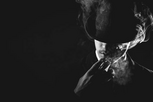Silent films and their dreamy, flickering images may seem outdated, but they shaped modern cinema. Silent films laid the framework for modern cinema’s storytelling magic through their humble beginnings and artistic pinnacle.
Early Technological Wonder (1890s–1900s)
Late 1800s kinetoscope and cinematograph inventions created silent films. Pioneering filmmakers like the Lumière brothers who documented daily life piqued interest in this new visual medium. Though simple, these one-scene films were groundbreaking when produced. Scene Set!
Silent Film Golden Age (1910s–1920s)
Video production grew easier as technology advanced. D.W. Griffith’s Intolerance (1916) and The Birth of a Nation (1915) established narrative organizing and editing principles that have endured. Silent films are universally understood because they overcome language barriers. The physical comedy and pantomime of Harold Lloyd, Buster Keaton, and Charlie Chaplin made them famous.
The Silent Film Summit: A Showpiece
 Silent films peaked in the 1920s. Paramount Pictures and Metro-Goldwyn-Mayer thrived with pioneering visual effects and big historical films. Rudolph Valentino and Clara Bow were world-famous actors with legendary characteristics.
Silent films peaked in the 1920s. Paramount Pictures and Metro-Goldwyn-Mayer thrived with pioneering visual effects and big historical films. Rudolph Valentino and Clara Bow were world-famous actors with legendary characteristics.
A Golden Age: Silence Dies (1920s–1930s)
The silent era ended with sound-on-film in the late 1920s. Some studios struggled to adapt, while others loved sound’s novelty. Silent cinema ended, yet the art form survived.
A Quiet Legacy: Conclusion
As silent film ends, its pioneers’ legacy will live on in cinema. They developed stories, performances, editing, and cinematography, which are still employed today. Next time you enjoy a feature film, remember the pioneers of sound and silent filmmaking.
